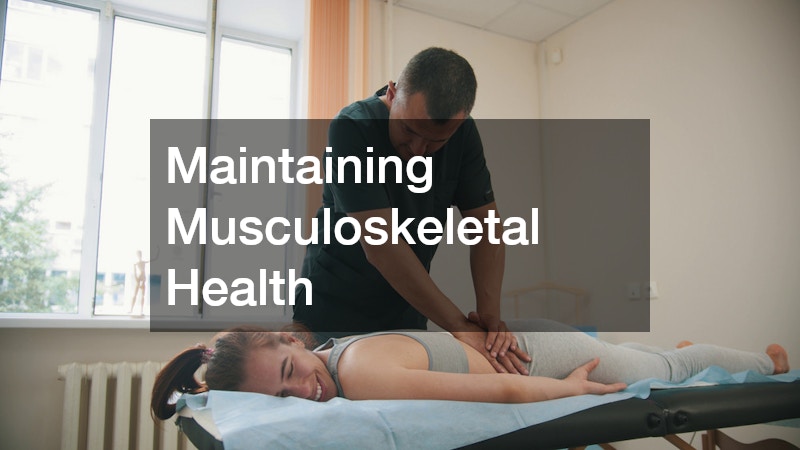Health and wellness are complex, multidimensional concepts that extend far beyond the absence of illness. Modern healthcare emphasizes physical, mental, and emotional well-being, recognizing that optimal health requires attention to all aspects of life. From preventive care to specialized interventions, individuals have access to a growing array of services that support functionality, vitality, and longevity.
In recent decades, the definition of healthcare has expanded to include services that were once considered purely optional or secondary. Treatments for physical performance, aesthetic improvements, and mental resilience are increasingly integrated with conventional medical care. This integration reflects a broader societal recognition that mental and physical health, functional mobility, and overall well-being are interconnected.
Access and convenience have also become central to modern healthcare. Community clinics, patient transportation solutions, and online therapy programs illustrate how healthcare infrastructure has evolved to meet diverse patient needs. By bridging geographic and logistical gaps, these services ensure that care is available when and where it is needed, supporting both preventive and restorative health outcomes.
The aim of this article is to explore ten critical areas within contemporary healthcare, each contributing to overall well-being. These include aesthetic services, musculoskeletal care, hormonal support, emergency access, oral health, surgical interventions, and mental health solutions. By examining each area, readers can understand how these services collectively support a holistic approach to wellness, emphasizing the integration of physical, emotional, and functional health.
The modern perspective on healthcare also emphasizes personalization. Treatments and interventions are no longer one-size-fits-all; instead, they are tailored to individual physiology, lifestyle, and personal goals. This trend underscores the importance of understanding the full spectrum of healthcare options available today. Through this lens, wellness becomes a continuous, multi-layered process—one that involves managing immediate needs, optimizing function, enhancing overall health, and supporting emotional resilience.

Refreshing Your Wellness Routine
Medspas have transformed the landscape of preventive and aesthetic healthcare. These facilities merge medical oversight with spa-like environments designed to promote relaxation, rejuvenation, and overall well-being. Services typically offered at medspas include facial treatments, laser therapy, body treatments, and specialized therapies for skin and soft tissue. While often perceived as luxury experiences, medspas are increasingly recognized for their contribution to overall wellness.
Historically, medical spas trace their origins to European health resorts, where hydrotherapy, mineral baths, and holistic treatments were employed to promote physical and mental balance. Over time, medspas evolved into clinically supervised centers where scientific advancements and therapeutic techniques converge. Modern medspas combine technology, medical expertise, and holistic wellness principles, demonstrating the integration of aesthetic, functional, and mental health benefits.
Medspas play a critical role in preventive healthcare by addressing early signs of aging, skin deterioration, and stress-related conditions. Treatments like therapeutic facials and light-based therapies can improve circulation, stimulate collagen production, and enhance tissue health. The benefits are not purely cosmetic; improved circulation and lymphatic flow can have measurable effects on overall health and resilience.
Beyond physical improvements, medspas contribute to mental well-being. The environment of calm and restorative care encourages relaxation, reduces stress hormone levels, and fosters a sense of balance. By blending clinical expertise with therapeutic ambiance, medspas exemplify how wellness and medical care can coexist in a single facility, reinforcing the holistic approach increasingly embraced in contemporary healthcare.
Enhancing Facial and Skin Health
Dermal fillers occupy a unique position in the intersection of aesthetics and functional healthcare. Initially developed to restore volume lost due to aging or injury, modern dermal fillers now support tissue health and structural balance. By enhancing facial contours and symmetry, they contribute to both appearance and functional outcomes, such as improved musculature support and tissue elasticity.
Dermal fillers evolved from early collagen injections to advanced formulations using hyaluronic acid and other bioengineered compounds. These innovations allow for precise correction of facial asymmetry, soft tissue deficits, and subtle age-related changes. While the cosmetic effects are apparent, the functional benefits are often overlooked. For instance, fillers can reduce muscular strain associated with compensatory facial movements, indirectly supporting oral function and expression.
The popularity of dermal fillers also reflects broader societal recognition of the importance of integrating appearance and wellness. People increasingly view cosmetic and medical treatments as complementary, not separate. By addressing both aesthetic and functional aspects, dermal fillers illustrate how healthcare has expanded beyond disease management to embrace holistic outcomes that influence confidence, psychological well-being, and social engagement.
Supporting Hormonal Balance
Bioidentical hormone replacement therapy (BHRT) offers an approach to managing hormonal changes associated with aging, menopause, and endocrine disorders. Unlike traditional synthetic hormones, BHRT employs molecules chemically identical to those naturally produced by the body, aiming to restore balance with precision.
Hormones regulate nearly every aspect of human physiology, influencing metabolism, cognition, mood, cardiovascular function, and reproductive health. Imbalances can manifest as fatigue, weight changes, emotional instability, and other systemic effects. BHRT addresses these issues by supplementing hormone levels in a controlled, individualized manner.
Historically, hormone replacement therapies were developed to relieve specific symptoms but often lacked personalization and natural replication. BHRT represents an evolution, emphasizing individualized care and the potential for broader health benefits beyond symptom management. By restoring equilibrium, these therapies can influence long-term health outcomes, quality of life, and overall vitality.
The emergence of BHRT illustrates the broader trend in healthcare toward integrative and individualized treatments. By combining scientific research, clinical expertise, and patient-centered care, BHRT exemplifies the contemporary focus on longevity, functional balance, and comprehensive wellness.

Maintaining Musculoskeletal Health
Chiropractic care focuses on the alignment and function of the spine and musculoskeletal system. Through spinal adjustments, joint mobilization, and postural therapies, chiropractic interventions support movement, flexibility, and structural integrity.
Chiropractic care has historical roots in the late 19th century, emphasizing the connection between spinal alignment and overall health. Over time, its practice has expanded to include preventive care, rehabilitation, and complementary therapies integrated with physical fitness and lifestyle management.
Research indicates that chiropractic care can reduce musculoskeletal discomfort, improve mobility, and enhance nervous system function. Its non-invasive approach makes it particularly valuable for long-term wellness strategies, serving as a preventive and restorative component of healthcare.
By maintaining alignment and addressing functional imbalances, chiropractic care supports holistic health. Its integration with physical therapy, ergonomic guidance, and fitness practices demonstrates how modern wellness programs emphasize the interconnectedness of body systems, illustrating a comprehensive approach to maintaining health and functionality.
Accessing Immediate Medical Attention
Walk in clinics have become vital access points for timely healthcare services, especially for acute but non-emergency conditions. These clinics provide diagnostic assessments, treatment for minor injuries, vaccinations, screenings, and preventive care, filling critical gaps in traditional healthcare delivery.
The development of walk-in clinics responds to the growing demand for accessible, flexible, and efficient healthcare. By offering extended hours, rapid service, and immediate evaluation, these clinics ensure that patients receive timely care without long delays, which is particularly beneficial for acute illnesses, minor injuries, and preventive measures.
Walk-in clinics contribute to broader community health by facilitating early intervention and monitoring. They provide entry points for continuous care, supporting both short-term needs and preventive health initiatives. Their role underscores the importance of accessibility, demonstrating that modern healthcare increasingly prioritizes patient-centered, convenient solutions.
Ensuring Safe and Reliable Medical Transportation
Medical transportation services play a critical role in supporting individuals with mobility limitations, chronic conditions, or post-surgical recovery. These services include non-emergency transport equipped to accommodate wheelchairs, stretchers, and specialized medical equipment, ensuring safe access to care facilities.
Initially focused on emergency response, transportation has evolved to address routine healthcare access challenges. Modern medical transportation reduces barriers, prevents missed appointments, and ensures continuity of care, particularly for populations with mobility challenges or limited geographic access.
By facilitating access to healthcare services, transportation providers support preventive care, treatment adherence, and patient safety. These services illustrate how non-clinical infrastructure is essential for effective healthcare delivery, reinforcing the concept that wellness depends not only on treatments but also on access, continuity, and reliability.

Sculpting Your Body Safely
Body contouring services encompass a range of interventions aimed at refining body shape, improving tissue distribution, and enhancing overall symmetry. Non-invasive techniques and surgical options are available, addressing both aesthetic desires and functional considerations such as posture and movement.
Body contouring has evolved from purely cosmetic procedures to include health-oriented outcomes. Proper body composition affects metabolism, cardiovascular load, musculoskeletal balance, and self-perception. These services exemplify the integration of functional and aesthetic considerations within contemporary healthcare.
As the healthcare landscape evolves, body contouring demonstrates the growing overlap between aesthetic and medical objectives. Interventions focus on promoting physical harmony, improving quality of life, and supporting psychological well-being, reflecting the multidimensional nature of wellness in modern society.
Regular Dental and Oral Care
Dentists play a foundational role in healthcare by supporting oral hygiene, preventive care, and restorative interventions. Routine check-ups, cleanings, and diagnostic assessments detect and manage conditions such as cavities, gum disease, and oral cancers.
Oral health influences systemic health, including cardiovascular function, diabetes management, and immune performance. Dentistry has evolved from a focus on mechanical interventions to a holistic understanding of oral care as central to overall wellness. Preventive care reduces disease risk, supports functionality, and enhances social and psychological outcomes.
By integrating dental care into wellness routines, individuals maintain a vital component of health that impacts nutrition, speech, and confidence. Dentistry exemplifies the importance of preventive care and illustrates the interconnectedness of various health domains.
Advanced Cosmetic and Functional Surgery
Cosmetic surgeons provide both aesthetic and functional interventions. Reconstructive surgery, corrective procedures, and elective enhancements improve physical capabilities, appearance, and psychological well-being.
Cosmetic surgery has historical roots in reconstructive techniques for trauma and congenital conditions. Today, these procedures also address aesthetic and functional optimization, reflecting an integrated approach to healthcare. Outcomes often include enhanced self-esteem, improved mobility, and strengthened social engagement.
This dual focus on aesthetics and function underscores the contemporary healthcare philosophy that prioritizes multidimensional wellness, illustrating how surgical interventions can contribute to long-term physical, emotional, and social health.

Supporting Mental Health and Recovery
Treatment for addiction and other digital mental health services provide flexible, accessible, and structured support for emotional and cognitive well-being. Online platforms offer therapy, counseling, recovery programs, and peer engagement, addressing behavioral and psychological challenges in a convenient format.
Digital mental health solutions complement traditional interventions, expanding access and increasing continuity of care. These platforms are particularly valuable for individuals managing addiction, anxiety, depression, or other mental health conditions, enabling consistent engagement with licensed professionals.
The rise of web-based treatment demonstrates healthcare’s adaptation to evolving needs, highlighting the integration of mental health with physical and aesthetic wellness. It reflects a holistic approach, emphasizing the interconnectedness of emotional, cognitive, and physical health in sustaining long-term wellness.
Integrating Healthcare Across Life Stages
Healthcare needs evolve throughout a person’s life, and modern wellness services reflect this continuum. From early adulthood to senior years, individuals require varying levels of preventive, restorative, and aesthetic care. Younger adults may focus on maintaining fitness, skin health, and preventive screenings, while middle-aged and older adults increasingly prioritize hormonal balance, musculoskeletal integrity, and functional mobility.
Medspas and dermal fillers, while often associated with aesthetic enhancement, also contribute to long-term skin health by stimulating tissue repair and circulation. Body contouring and cosmetic surgery, beyond aesthetic improvement, can support posture, balance, and overall functional capacity. Dental care remains critical across all life stages, influencing systemic health, nutrition, and cognitive performance.
Walk-in clinics and medical transportation services ensure continuity of care, particularly for populations with variable access to healthcare. Similarly, web treatment for addiction and other digital mental health programs provide continuous support, helping individuals navigate life’s challenges and maintain emotional resilience. Bioidentical hormone replacement therapy addresses physiological shifts in midlife and beyond, supporting energy, metabolism, and overall vitality. Chiropractic care helps maintain structural integrity, addressing accumulated stress and postural changes that occur with age.
Collectively, these services illustrate the interconnectedness of body, mind, and lifestyle. By recognizing the evolving healthcare needs across life stages, individuals can appreciate the full spectrum of modern wellness offerings. This comprehensive approach emphasizes that health is not static; it is an ongoing journey of maintaining balance, functionality, and well-being across every phase of life.
Modern healthcare now encompasses physical, aesthetic, and mental health in integrated and multidimensional ways. Services such as medspas, dermal fillers, and body contouring support appearance and function, while bioidentical hormone therapy, chiropractic care, and dental services maintain systemic health and structural integrity. Accessibility-focused offerings like walk-in clinics and medical transportation ensure continuity, while cosmetic surgery and web treatment for addiction demonstrate comprehensive approaches to emotional, physical, and aesthetic wellness.
The modern understanding of health emphasizes prevention, restoration, and enhancement. By recognizing how each of these services contributes to holistic well-being, individuals can appreciate healthcare as a multidimensional framework supporting body, mind, and lifestyle. This integrated approach highlights the evolution of contemporary wellness, demonstrating the importance of addressing appearance, function, and emotional resilience in the pursuit of lifelong health.
